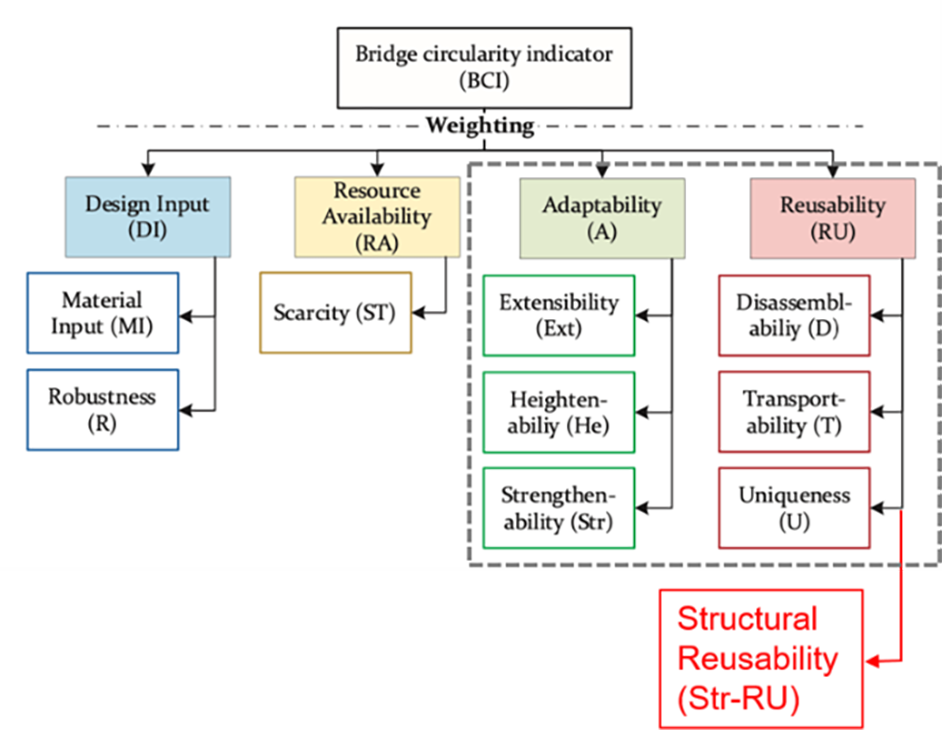Life Cycle and Circularity Assessment of Bridges in Early Design Stages
Author: Anna Hodel
Language: English
Abstract
This thesis discusses the potential for reducing environmental impact, and the raw material consumption and waste production in the construction sector, specifically in the bridge design based on design and material selection. The aim of this thesis is the development of an objective metric for evaluating environmental impact and circularity, which can be further used in performance-based Generative Design to make computer-aided design decisions in the early stages of bridge structures.
The approach to develop a sustainability and circularity metric includes the following steps:
- Literature review of existing metrics and their applicability for bridges in an automated manner
- Case study to identify key aspects and parameters
- Development of a general framework based on findings from the case study and literature review
As proven by the literature review, Life Cycle Assessment (LCA) is a reliable method for sustainability assessment. Its combination with a Bridge Circularity Index (BCI) will serve as a general framework [1] (see Figure 1).
In a next step, a Python tool is created to allow the automated assessment of the developed framework. The Python tool combines the approaches of LCA and BCI and includes the further extension of the database with new concrete compositions and additional materials via EPDs.
1000 parametrically generated concrete frame bridges (CFB) are used to test Python tool. The parameters which are varied within the specified limits are the dimensions marked in Figure 2, the materialisation and the reinforcement ratio. The sample data is provided by Sophia Kuhn. The testing proves the functionality of the Python tool and highlights the limitations regarding the assessment of their circularity: the lack of established metrics especially for the re-use aspect of bridge structures.
Despite the difficulty in data collection for proper LCA and the identified gap in research on circularity metrics for bridges, the integration of an objective metric for assessing sustainability and circularity of bridge design options can unlock new possibilities and highlights the need to re-evaluate the standard procedure and prioritization of traditional design objectives in bridge design. This is necessary to address the pressing issues of climate change and the depletion of natural resources caused by excessive raw material and waste consumption. Upcoming tools such as Building Information Modelling (BIM), including material passports, and the use of optimization algorithms and Artificial Intelligence (AI) are expected to show high potential in combination with LCA and circularity assessments.
[1] Coenen, TB, Santos, J, Fennis, SA, Halman, JI. Development of a bridge circularity assessment framework to promote resource efficiency in infrastructure projects. Journal of Industrial Ecology. 2021; 25: 288– 304. https://doi.org/10.1111/jiec.13102


